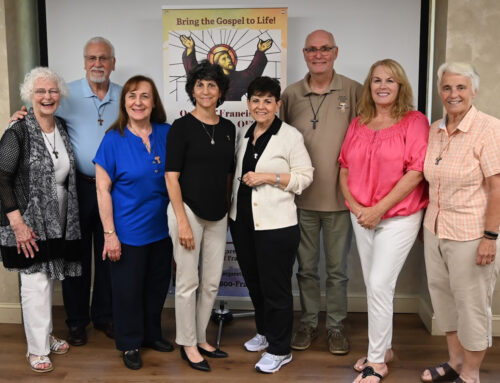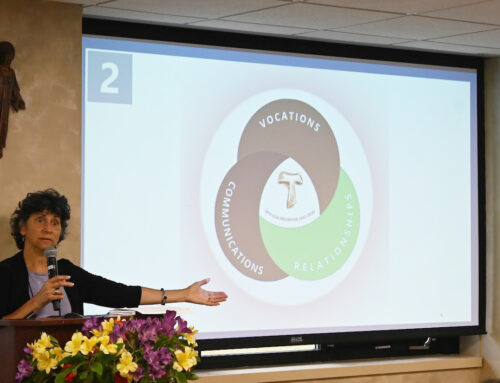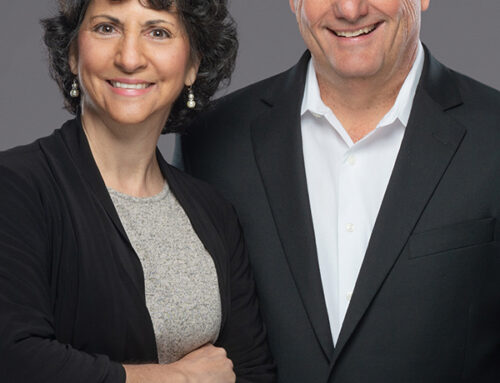(This article originally appeared in the TAU-USA Spring 2025 Issue #115)
Regional Roundup
In this issue, five of the 30 regions are highlighted.
Los Tres Compañeros Region
The Los Tres Compañeros Region covers the central swath of Texas from the southern tip in the south to Dallas and Fort Worth in the north and has 18 established fraternities.
When the region was formed, many names were suggested by the members. To “walk with Francis,” the name “Los Tres Compañeros” was decided upon to express the diversity within the great state of Texas. The three portions within the region are Leo, Angelo, and Rufino.
It is a diverse region where members respond to the cultural blessings provided by the various members. They assist with migrant issues and have members that help with many of those needs within their local parishes. Everything they do – they do as Franciscans.
Mother Cabrini Region
The Dioceses of Joliet, Rockford and Chicago are in the northeast corner of Illinois and are within the Mother Cabrini Region. It has 19 established fraternities and one emerging community.
The shrine of Mother Frances Xavier Cabrini is in Chicago. Local lore is that Benet Fonck, OFM, was the Spiritual Assistant, and that he attributed his own medical cure to her intercession. So, her name was chosen for the region.
The fraternities within Mother Cabrini Region are geographically close, allowing members to drive to be together. The usual gathering place for the region is Mayslake Village, which was founded as a retirement home in 1965 by the Franciscans under the direction of Fr. Mark Hegener, OFM, one of the earliest advocates for the needs and rights of the elderly. Over 75% of its residents are in HUD Section 8 housing.
The oldest fraternity in the region was founded in the 1870’s. Mother Cabrini Region is blessed that over 100 people attend their regional formation events.
St. Elizabeth of Hungary Region
The region of St. Elizabeth of Hungary covers all of Northern New England – Maine, New Hampshire, and Vermont, as well as eastern Massachusetts – the Boston area and Cape Cod, and one fraternity in easternmost New York. Within the region are 24 established fraternities and two emerging communities.
After members in the region were asked to submit names, St. Elizabeth of Hungary was selected by the vote of the regionalization committee, and the NEC approved it. St. Elizabeth is the co-patroness of our Order.
The region has over 400 members and is made up of six districts. In the Boston area there is a Cape Verdean fraternity, a Spanish-speaking fraternity, and a Korean fraternity. Multiple members from the region have served and continue to serve at the national level.
St. Katherine Drexel Region
St. Katherine Drexel Region covers southern New Jersey, eastern Pennsylvania (Reading to Philadelphia) and one fraternity in Delaware. It has 23 fraternities and three emerging groups.
When the region was established, Katherine Drexel had been beatified. She was a Philadelphia native, and was the daughter of Francis Drexel. Her mother, Hannah, died five weeks after giving birth to Katherine, who was canonized in 2001. The region is blessed with a strong Franciscan presence of life-giving union: The motherhouse of the Franciscan Sisters of Philadelphia is in Aston, PA; the Franciscan Bernardine Sisters are in Reading, PA; the OFM friars share their ministry to the poor and homeless in Kensington, PA; there are two Franciscan universities nearby (Neumann and Alvernia); there are Poor Clares in Langhorne, PA, Chesterfield, NJ, and Wilmington, DE; and there are Capuchin friars in Wilmington and Center City Philadelphia.
The oldest fraternity dates back to the late 1800’s. Within the region, the Franciscan spirit illuminates six dioceses.
Juan de Padilla Region
The Juan de Padilla Region covers all of Oklahoma and Kansas, and the Kansas City (KS and MO) metro area. There are 14 fraternities within the region.
Fr. Juan de Padilla was a priest and the first Franciscan who came to spread the Gospel and establish the Church in a new area. In 1540 he accompanied Coronado’s expedition to New Mexico. The next year Juan went with the expedition to Kansas, going up through Oklahoma. He met the Quivira Indians and remained to work among them after the explorers returned to Mexico. He was killed by several of the Quivira as he was making his way to the Kaw Indians, traditional enemies of the Quivira. He is the first Christian martyr in what is now the USA.
Juan de Padilla was the last region to be formed. Within the region are the following: a marker at Fort Dodge in Kansas recognizing Coronado’s journey to look for the “Seven Cities of Gold” – Cibola; the Blessed Stanley Rother Shrine in Oklahoma City; the World Center of Prayer for Peace in Beloit, KS; and, until it was removed, there was a marker in Herington, KS, noting Fr. Juan de Padilla’s activities in the area.
There are fraternities in the region that have been established for more than 100 years. Brother Jacoba Fraternity has outreach to First Nations People and members travel hours to Indian Reservations four times each year to deliver goods that have been collected for the tribal people using a large moving van.
Juan de Padilla Region also has an excellent website. Check it out: www.jdpofs.org




Leave A Comment